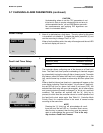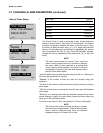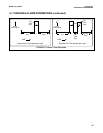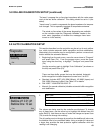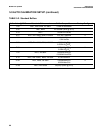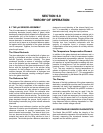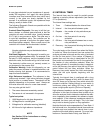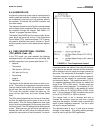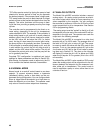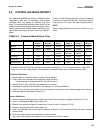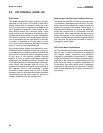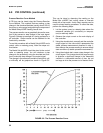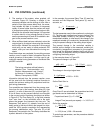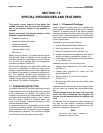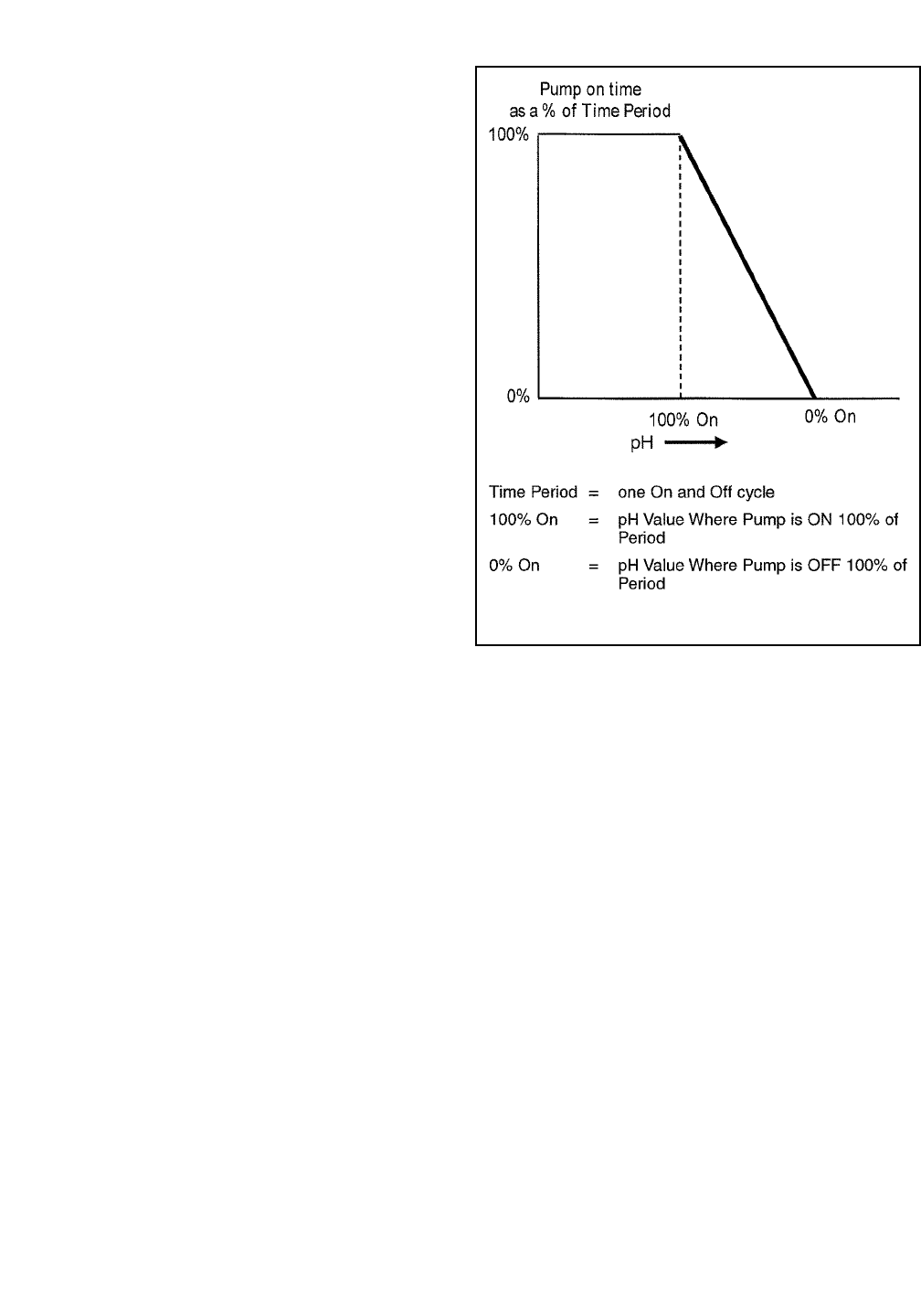
MODEL 54e pH/ORP SECTION 6.0
THEORY OF OPERATION
6.4 ALARM RELAYS
An alarm is a relay that closes a set of contact points (a
switch) inside the controller. In doing so, the relay clos-
es an electrical circuit and turns on a device wired to
the contacts. The Model 54e pH/ORP controller has
four alarm relays.
The relays are turned on and off by the controller based
on the control points or setpoints that you pro-gram into
the controller through the keypad. See Section 5.7
"Alarms" to program the alarm relays.
The Model 54e pH/ORP has two control modes for de-
vices which are turned off and on: Time Proportional
Control Mode (TPC), and Normal Mode. TPC is gener-
ally used for chemical feed control. Normal or "on-off"
mode is typically used to control external alarm lights or
horns.
6.5 TIME PROPORTIONAL CONTROL
(TPC) MODE (Code -20)
In the TPC mode, you must establish the following
parameters which will determine how the Model 54e
pH/ORP responds to your system (see Section 5.7):
• Setpoint
• Time period
• URV point (or 100% on)
• LRV point (or 0% on)
• Proportional
• Integral
• Derivative
The setpoint is the desired value that you want to con-
trol at. Time period is programmed in seconds and de-
fines the interval during which the controller compares
the pH input from the sensor with the Setpoint. In the
TPC mode the controller divides the period up into
pump on-time (feed time) and pump off-time (blend
time).
The URV setting determines how far the pH must devi-
ate from the setpoint to get the pump to be on for the
entire period. The LRV setting determines how close
the pH must be to the setpoint for the pump to be off for
the entire period. The LRV setting should always be set
at zero. When the error (the pH minus the setpoint) is
between the URV and LRV values, the relay will be en-
ergized for some portion of the time period. As the pH
value approaches the setpoint, the pump will be feed-
ing for shorter and shorter intervals, and the chemicals
will be allowed to mix for longer and longer intervals of
the period. This relationship is illustrated in Figure 6-1.
The exact amount of on time and off time per period is
determined by the settings for proportional, integral,
and derivative bands. The proportional band (P) in %
is a separate adjustment that narrows (or widens) the
range of the TPC 0-100% action. Smaller values are
used for more control response. For a setpoint of 7 pH,
a URV of 2 pH, and P=100%, a pH reading of 8 would
result in a relay on (8-7)/((2-0)*(100%)) or 50% of the
time. If P was changed to 50%, the same relay would
be on (8-7)/((2-0)*50%) or 100% of the time.
The integral band is set in seconds and acts to
increase the controller output as more time is spent
away from the setpoint. A smaller value in seconds will
result in faster integration response. Too low a value
will result in excess oscillation.
The derivative band is set in % and acts to prevent
changes in the reading. This setting should generally
be set to zero for pH and ORP applications.
FIGURE 6-1. Time Proportional Control
47



